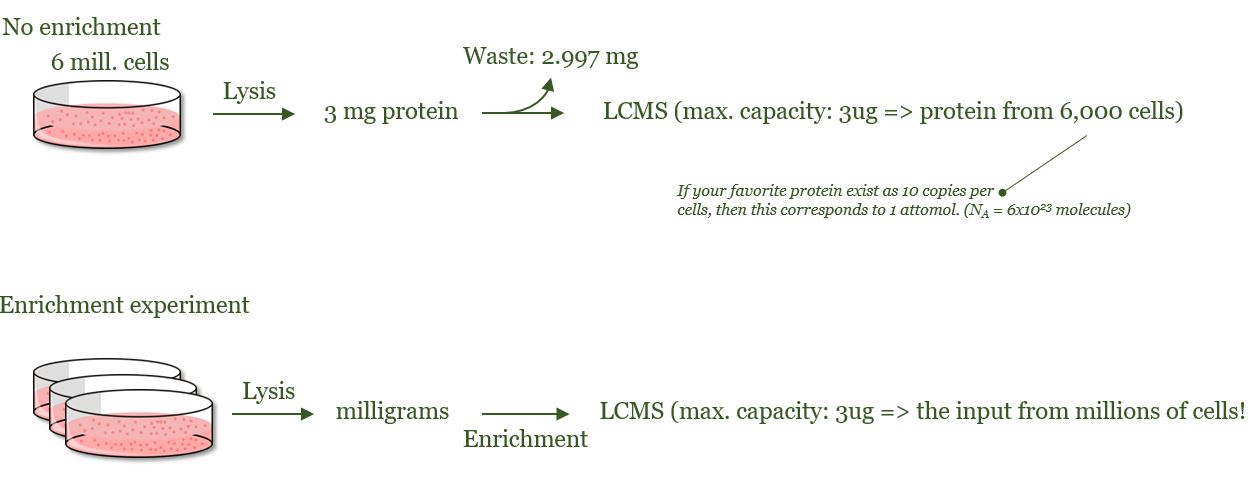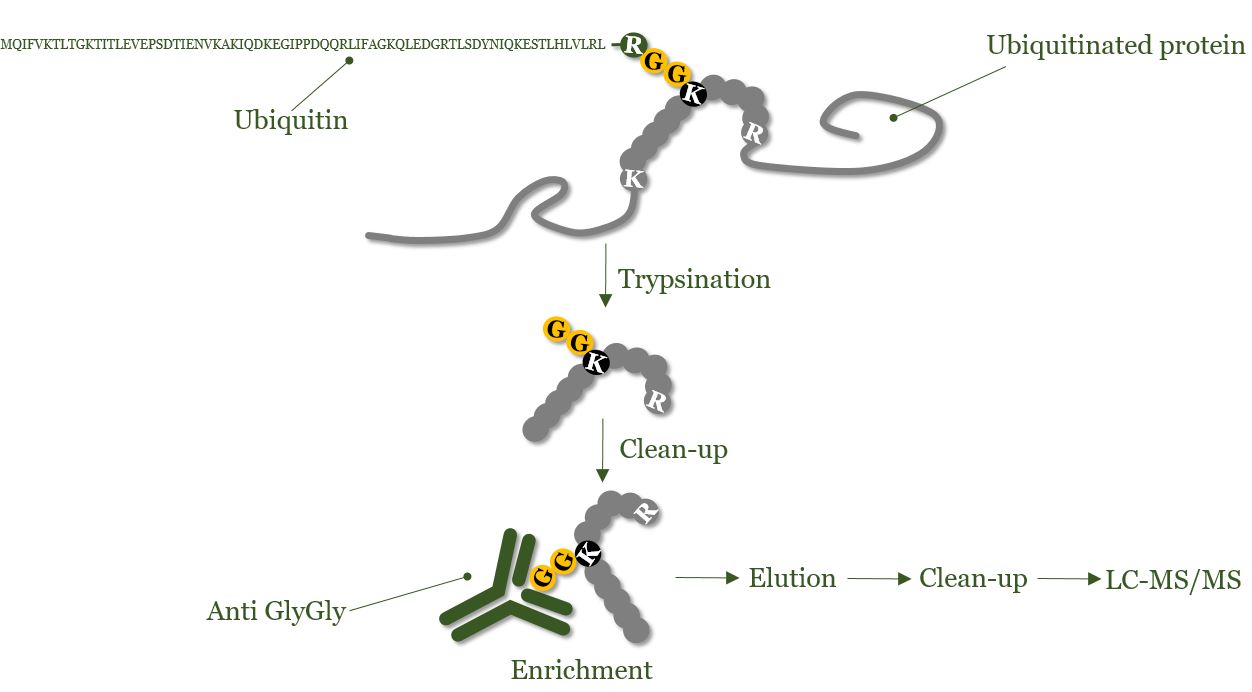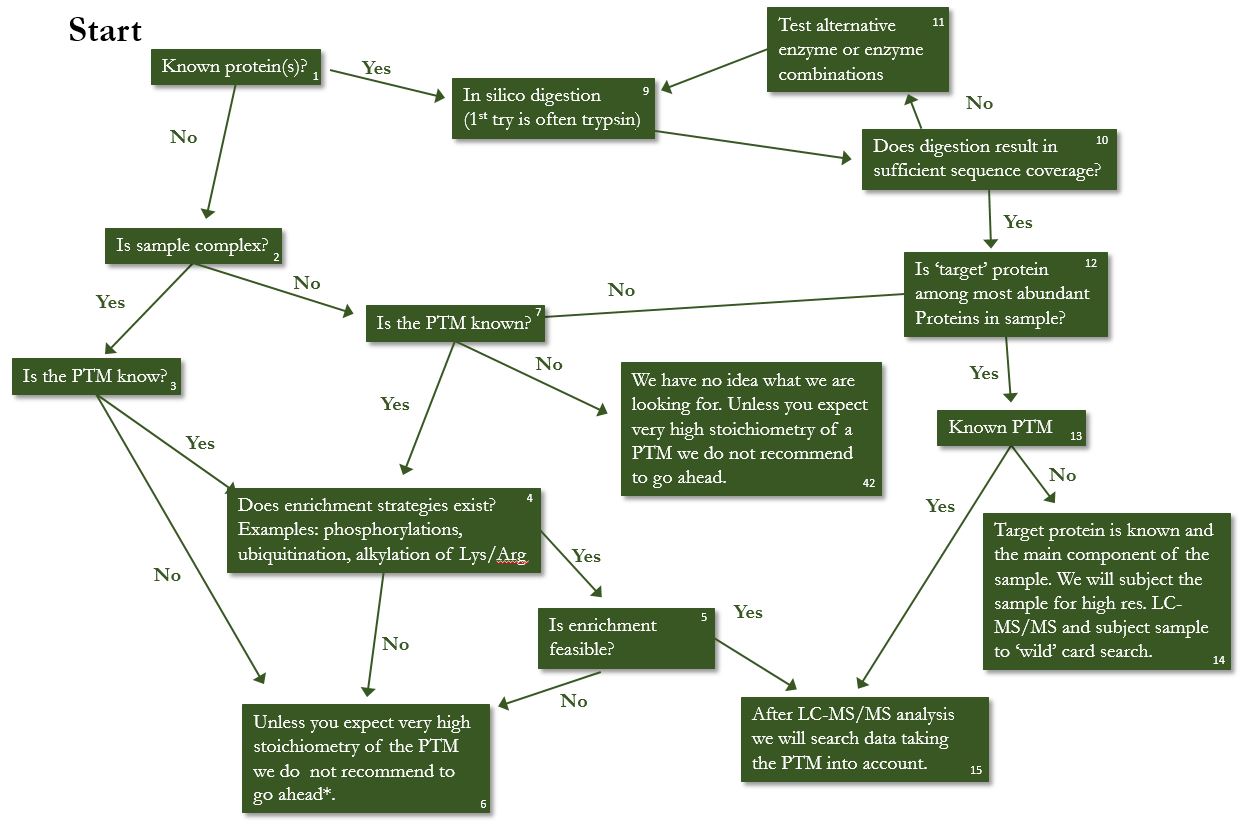Post Translational Modification
For analysis and identification of Post Translational Modification (or PTMs) mass spectrometer is particular powerful. However, because PTMs are are often not present in stochiometric amounts success is often directly correlated to available enrichment strategies. For a successful ‘global’ PTM analysis, an enrichment is most often required.

Enrichments of phosphopeptides is one of a few robust enrichment technologies and includes two chromatographic enrichment strategies: IMAC(opens in new window) and titanium dioxide(opens in new window). Both relies on the interaction of phosphorus-coordinated oxo groups with metal atoms (Fe and Ti). Both technologies are can be carried out in the Center.
Another robust enrichment strategy targets trypsin generated ubiquitin modified peptides. Like most antibody peptide focused enrichments, suggested starting amounts are high (milligrams). The Center can help generate and purify peptides from the samples so that the user can carry out the antibody based modified peptide enrichment prior to LC-MS/MS analysis by the Center,

Enrichment is not always required or advisable. Example: target is a single abundant protein in a non-complex sample. Not applying enrichment can allow us to gauge stoichiometry of the modification(s). A dynamic ranges (between modified and non-modified peptides) of 3-orders of magnitude can often be handled. The decision chart below helps to decide whether enrichment should be used or not.
